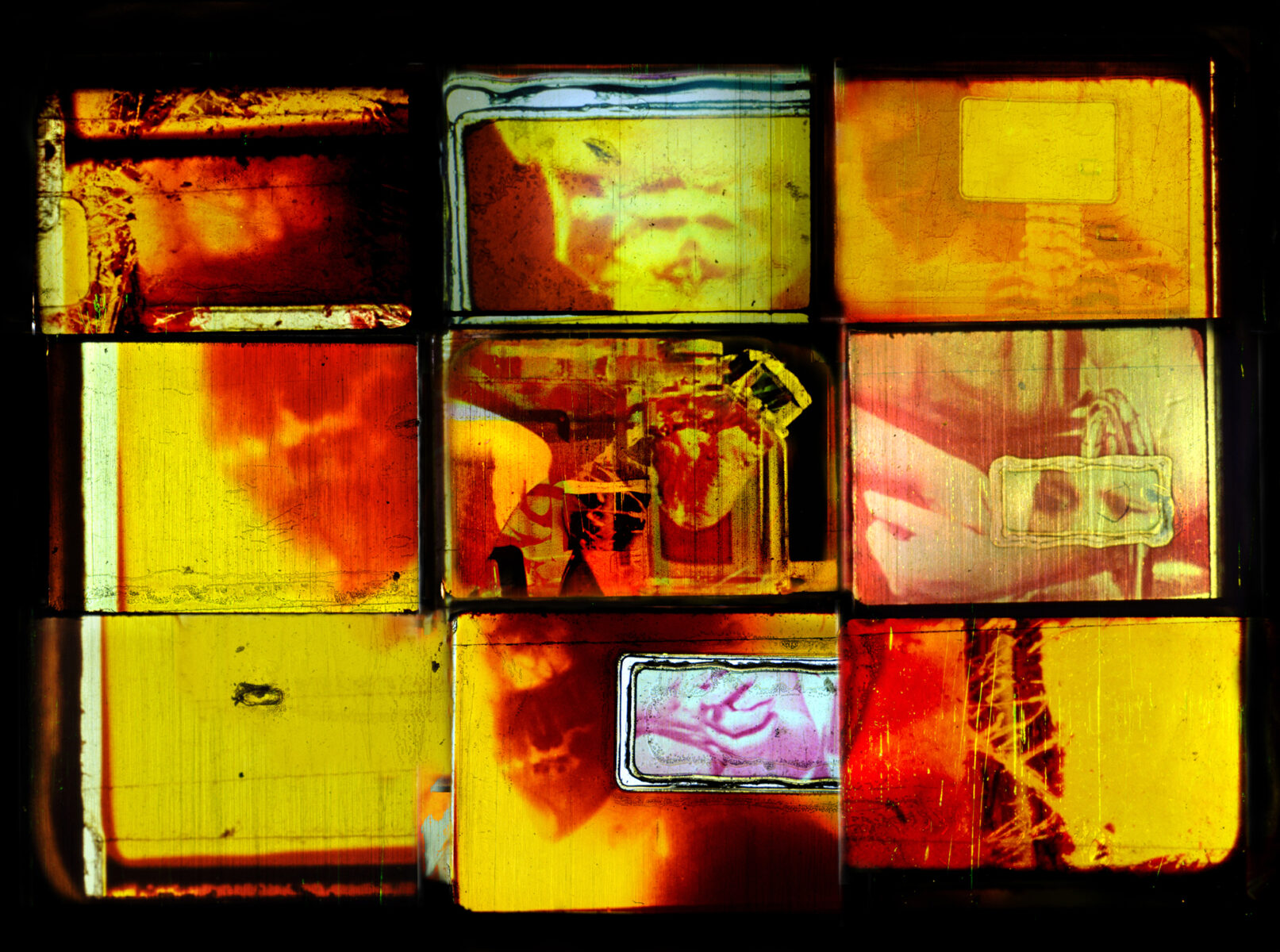2012 -2015, 2022; archival pigment prints on film or rag paper; found x-ray light boxes
Medical films have been surveying the body and giving expert instruction on how to take control of our uncontrollable selves since motion picture’s invention. Now due to its outdated format, content, and lack of formal beauty, many 16mm clinical films are rotting media cadavers, ripe for experimentation. I first started digging through collections of medical media because I had been photographed frequently for pediatric research and was obsessed with (as well as frightened of) the possibility of finding images of my body published without my consent. Wondering if I would recognize myself within the crowd of segmented figures and blacked-out eyes, I eventually found moments that felt like my own. As an artist, I currently examine photographic media’s power, both inside and outside of the clinic, to isolate where it hurts and to expose what it is to be human.
Human cadavers are typically used for two years before retiring from service. I had an opportunity to survey dissected and dismembered cadavers after their two-year contribution to the medical field. As a graduate student at the University of Florida, I was able to draw the medical school’s donated bodies along with a group of graduate students from the School of Art + Art History. We were to follow two rules: do not depict any recognizable features that would disclose their identity and treat the cadavers with respect. The overall distressed state we found the bodies to be in as well as the variety of marks evident throughout their anatomy, raised questions surrounding the definition of respect and identity. I also took notice of details disclosing evidence of their pre-mortem history. For example, I could see scars, wrinkles and birthmarks next to precise incisions and thoughtlessly torn flesh. The cadavers held unspoken narratives of personal sovereignty and silent obedience.
Reflecting on this experience, I started asking ethical questions regarding my use of the dead clinical media I had been collecting, dissecting, and reanimating for my own experimental research. Following through on the logic that the use of media within the clinic performs in lieu of a human subject, it makes sense to me that the media produced by the clinic could be seen as a body worthy of identity and respect. People record trauma as sensory memory or feeling rather than linguistic narrative. Looking closely at my abused collection of films, I could see a history of trauma imparted on the cellular forms. What are these feelings? I question the use of bodies that do not have the means to consent fully to their handling and the motives that drive the need to use them. While I grapple with clinical media’s distance to person-hood, media such as art and music (especially Leslie Gore’s “You Don’t Own Me”) connect me to my desire to feel human, sensual, and loved.















